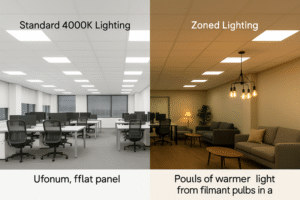Are you tired of complaints about flickering, buzzing, or incompatible LED bulbs? These technical failures lead to frustrated customers, costly product returns, and a serious blow to your brand's reputation.
Success hinges on compatibility. Select bulbs with high-quality internal drivers designed for a wide range of dimmers. Always verify performance by requesting a dimmer compatibility list from your supplier and testing samples on different dimmer types before placing a large order.
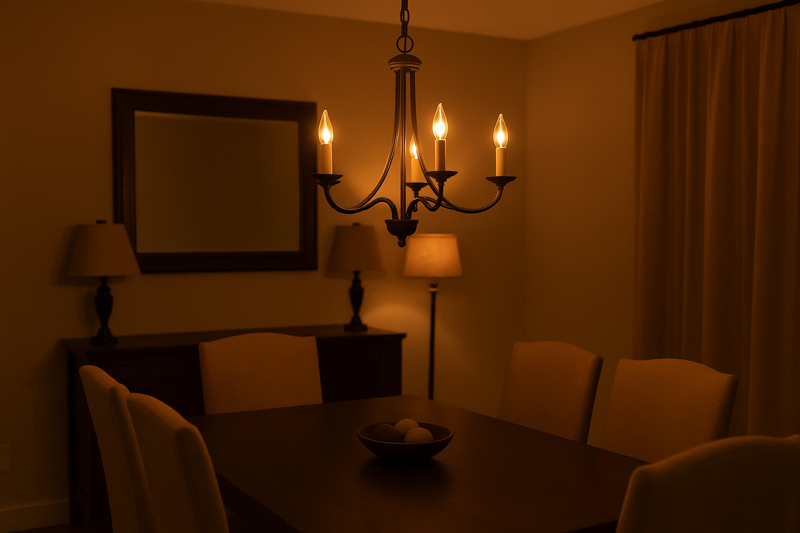
There is no single issue that causes more headaches for lighting buyers than poor dimming performance. I've been in this industry for over 30 years, and the transition from simple incandescent bulbs to complex LEDs created a huge challenge. I'll never forget a conversation with a new client a few years ago. He had switched to a new, cheaper supplier for his dimmable candelabra bulbs to save about ten cents per unit. Six months later, he called me in a panic. Nearly 30% of his inventory was coming back as returns. The bulbs flickered, they buzzed, or they wouldn't dim at all. That ten-cent savings ended up costing him tens of thousands of dollars in reverse logistics, lost sales, and reputational damage. This is a story I've heard many times. Choosing the right dimmable bulb isn't about finding the lowest price; it's about managing risk and protecting your customers from a frustrating experience.
Why do so many dimmable LED bulbs flicker and buzz?
Are you frustrated by the most common complaints about LED lighting? This single issue can make a product feel cheap and unreliable, turning a beautiful fixture into an annoying strobe light.
Flicker and buzz are symptoms of an electrical conflict between the LED bulb's internal driver and the wall dimmer switch. Older dimmers designed for incandescent bulbs communicate poorly with the complex electronics inside an LED, causing this instability.
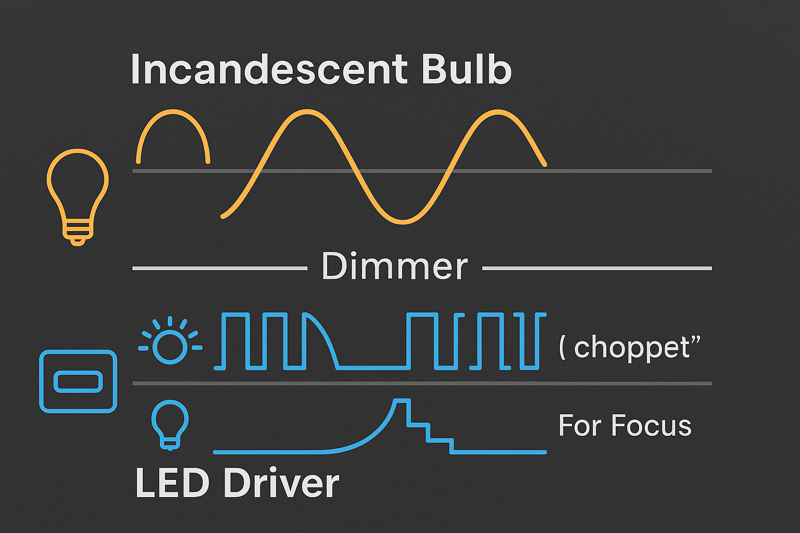
To understand the problem, you have to understand the fundamental difference between the old and new technology. An incandescent bulb was incredibly simple: it was just a wire (a filament) inside a glass bulb. A dimmer switch worked by simply reducing the amount of electrical power going to that wire, making it glow less brightly. It was a direct, simple relationship. An LED bulb, however, is a sophisticated piece of electronics. It's a miniature computer. It has an internal "driver" that takes the high-voltage AC power from your wall and converts it into the low-voltage DC power the LED chips need. When you connect this complex device to an old-style dimmer that's just crudely "chopping" the power signal, the driver can get confused. This confusion and instability are what you perceive as flicker or hear as a high-pitched buzz.
The Technology Clash: Analog vs. Digital
The root of the problem is a mismatch in how these technologies operate.
- Incandescent Dimming (The Old Way)1: Think of this like a simple water valve. The dimmer restricts the flow of electricity, and the filament glows less. It was a purely resistive load, making it predictable and easy to control.
- LED Dimming (The New Way)2: The LED driver is a digital interpreter. The dimmer "speaks" by chopping up the AC power wave. The driver has to listen to this chopped signal, understand the user's intent (e.g., "dim to 20%"), and then deliver a perfectly smooth, stable DC current to the LEDs. A cheap or poorly designed driver is like a bad translator—it misunderstands the signal, leading to a stutter, or flicker.
Deconstructing the "Buzz"
The audible humming or buzzing sound is a physical vibration.
- Coil Whine3: Inside the driver, there are tiny magnetic components like inductors and transformers. When the electricity flowing through them is chopped up erratically by an incompatible dimmer, it can cause them to physically vibrate at a high frequency. This vibration is what your ear picks up as a buzz.
- Quality Components Matter4: At Hongyu Bulb, we mitigate this by using high-quality driver components. The coils are wound tightly and often potted in epoxy resin. This dampens the vibrations, ensuring silent operation even at very low dim levels. A cheaper manufacturer will skip this step, saving a few pennies but creating a noisy, inferior product.
Here’s a breakdown of the core conflict:
| Feature | Incandescent Bulb | LED Bulb |
|---|---|---|
| Internal Components | Simple Tungsten Filament | Complex circuit board with a Driver, LEDs, etc. |
| Load Type | Resistive (Simple) | Capacitive / Inductive (Complex) |
| Dimmer's Job | Reduce power to a simple load. | Send a complex signal to an electronic interpreter. |
| Common Problem | None | Flicker, Buzz, Incompatibility |
Understanding this fundamental clash is the first step to selecting a bulb that is engineered to overcome it.
What makes a high-quality dimmable LED driver?
Do you feel like you're buying a "black box" when you purchase an LED bulb? The hidden components inside the base are what determine success or failure, but their quality is invisible from the outside.
A high-quality driver uses superior components, including a smart IC chip, to ensure a wide dimming range (e.g., 100% down to 5%), produce a smooth, linear light decrease without steps, and operate silently across all brightness levels.
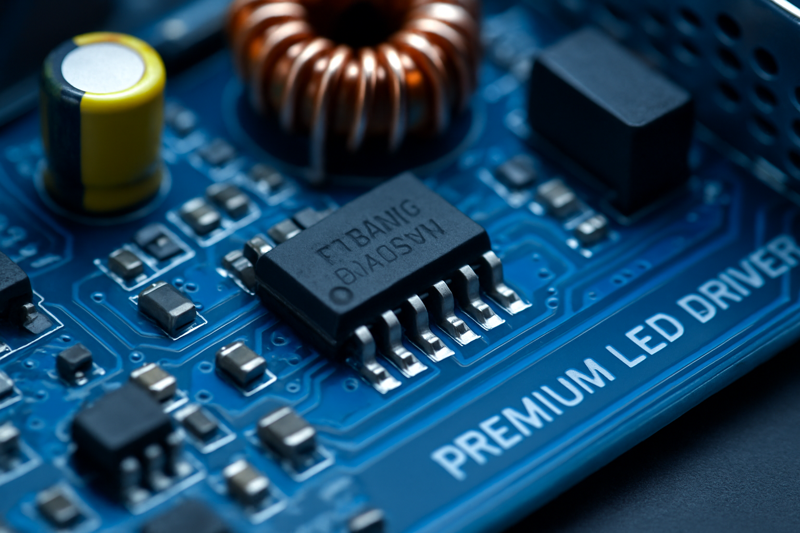
The driver is the heart and brain of the dimmable LED bulb. As a manufacturer, I can tell you this is where the most significant cost and performance differences lie between a premium bulb and a cheap one. Two bulbs can look identical on the outside, but one will dim flawlessly while the other is a flickering mess. The difference is almost always the quality of the driver we choose to build into the base. For our clients in the US and Europe who demand reliability, we invest in more advanced driver designs because we know it's the key to a successful product and a happy end-user. It's the unseen component that delivers the visible performance.
Key Characteristics of a Superior Driver
When you're discussing specifications with a supplier, these are the features to ask about.
- Wide and Smooth Dimming Range5: A cheap driver might only dim from 100% down to 40% before it starts flickering and cuts out. A premium driver should offer a much wider range, smoothly dimming from 100% down to 10% or even 5%. This allows for true mood lighting, from bright task light to a very low, candle-like glow.
- Linear Dimming Curve: The dimming should be gradual and consistent. As you move the dimmer slider, the light level should decrease in a corresponding, smooth line. Poorly designed drivers can have "steps" where the light level jumps suddenly, or a "dead zone" where a large turn of the dimmer knob does almost nothing.
- High Power Factor (PF)6: This is a more technical measure, but a Power Factor above 0.9 indicates a very efficient driver that wastes very little energy. It's a hallmark of good engineering and is often required for commercial projects and utility rebates.
The Components That Make the Difference
While you won't see them, the quality of these internal parts is what you're paying for.
- The Integrated Circuit (IC)7: This is the central processing chip of the driver. Advanced ICs are "smarter" and better at interpreting the messy signals from all types of dimmers, actively correcting the power flow to prevent flicker.
- Capacitors and Inductors8: These components help to smooth out the flow of electricity. High-quality, long-life capacitors are crucial. This is a common failure point in cheap bulbs; when the capacitor fails, the bulb starts to flicker and then dies completely.
This table shows what to look for:
| Feature | Basic, Low-Cost Driver | Premium, High-Quality Driver |
|---|---|---|
| Dimming Range | Limited (e.g., 100% - 30%) | Wide (e.g., 100% - 5%) |
| Smoothness | "Steppy" or uneven dimming | Smooth, linear, and continuous |
| Noise | Audible buzz or hum, especially at low levels | Silent operation |
| Compatibility | Works with only a few specific dimmers | Broad compatibility with many dimmer types |
Investing in a bulb with a premium driver means you are buying reliability, performance, and peace of mind.
How do you ensure compatibility with different dimmer switches?
Are you aware that the problem might not be the bulb, but the dimmer on the wall? With hundreds of dimmer models on the market, ensuring your bulb works with most of them is a huge challenge.
Proactively manage compatibility. Ask your supplier for their "Dimmer Compatibility List," which shows which specific dimmer models they have tested. Prioritize bulbs that are tested to work with both older Leading-Edge and modern Trailing-Edge dimmers.
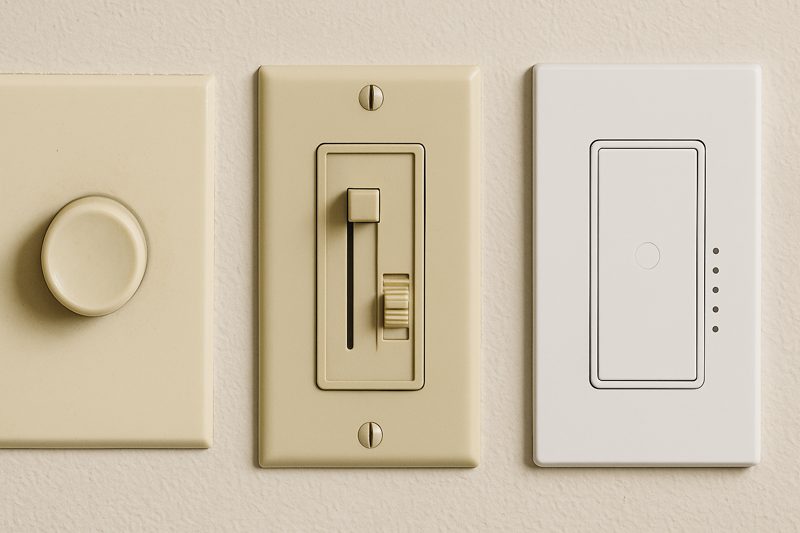
This is the second half of the compatibility equation. A perfect driver can still struggle if it's paired with a deeply incompatible dimmer switch. Most homes, especially older ones, are filled with dimmers that were installed long before LED bulbs were common. A buyer like Jacky from the US needs to sell a product that will work for the maximum number of his customers with minimal hassle. He can't expect his customers to go out and replace all their wall switches. Therefore, the responsibility falls on the bulb manufacturer to design and test for this real-world complexity. This is a core part of our R&D process at Hongyu Bulb. We don't just design a bulb that works perfectly in our lab; we design a bulb that works imperfectly, but reliably, in the messy reality of your customer's home.
The Two Main Types of Dimmers
Understanding the basic dimmer technologies is key.
- Leading-Edge Dimmers (TRIAC)9: This is the older, most common, and least expensive type of dimmer. It works by cutting off the front of the AC power wave. They were designed for the high power draw of incandescent bulbs and are the source of most compatibility issues with low-power LEDs. However, because they are so common, a good LED bulb must be designed to work with them.
- Trailing-Edge Dimmers (ELV - Electronic Low Voltage)10: This is a more modern and sophisticated type of dimmer. It works by cutting off the back of the AC power wave, which is a gentler process that works much better with the electronics in an LED driver. They provide smoother dimming and are far less likely to cause buzz or flicker. They are the ideal choice, but they are less common in existing homes.
The Manufacturer's Responsibility: Testing
A professional supplier will not leave compatibility to chance. They will invest in rigorous testing.
- The Dimmer Library11: We maintain a library of dozens of the most common dimmer models from major global brands like Lutron, Leviton (for the US market) and others for Europe. Our engineers test every new bulb design on all these dimmers.
- The Compatibility List: The result of this testing is a formal document—a Dimmer Compatibility List12. We provide this to our clients. It shows exactly which dimmer models were tested and passed. This list is an invaluable tool. You can use it for your own quality assurance, provide it to your customer service team to handle inquiries, and even post it on your website as a sign of quality and transparency. If a potential supplier cannot provide you with such a list, you should be very cautious. It likely means they haven't done the testing.
Here is the compatibility landscape:
| Dimmer Type | Technology | Compatibility with LEDs | Prevalence in Homes |
|---|---|---|---|
| Leading-Edge (TRIAC) | Older, simpler, cheaper | Often problematic; requires a well-designed LED driver | Very High |
| Trailing-Edge (ELV) | Modern, more complex | Excellent; designed for electronic loads like LEDs | Low to Medium |
Your goal is to source a bulb that has been specifically engineered and tested to work well with the most common and problematic type: the leading-edge dimmer.
What is the best way to test and verify dimming performance?
How can you be sure a supplier's claims are true before committing to a massive order? A sample that looks good on your desk might fail in the real world, and you need a reliable process to find out first.
Create a robust, real-world testing protocol. Order samples and test them on multiple dimmer types, especially common TRIAC models. Evaluate the full dimming range, listen for noise, and run a long-duration test to check for overheating or flickering over time.
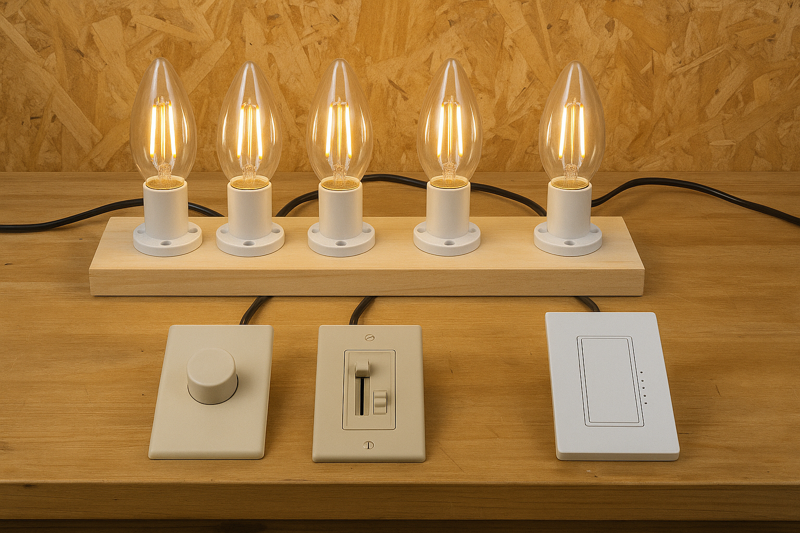
Trust but verify. This is a crucial principle for any product manager or buyer. A datasheet and a sales pitch are just promises. You need to see the proof for yourself. Before we ever sign a large contract with a new client at Hongyu Bulb, we insist they get samples in their hands. We are confident in our product's performance because we have already done the rigorous internal testing, and we want our clients to have that same confidence before they commit their company's money and reputation to our products. A good supplier will be proud of their product's performance and will encourage you to put it through its paces.
Setting Up Your Own Test Bench
You don't need a fancy lab. You can create a simple but effective test setup.
- Gather Your Dimmers: Purchase a few of the most common dimmers in your target market. For the US, this would include a standard Lutron or Leviton TRIAC slider dimmer. It's also wise to get a newer, LED-compatible ELV dimmer to see how the bulb performs under ideal conditions.
- Create a Test Board: Mount a few E12 or E14 sockets onto a piece of wood and wire them to your dimmer switches. This allows you to test multiple bulbs at once and compare them side-by-side with a competitor's product.
The Critical Testing Protocol
Follow a structured process to evaluate the samples.
- Full Range Test: Slowly move the dimmer from 100% brightness down to its minimum level.
- What to look for: Is the dimming smooth or does it "step"? Does the bulb flicker at any point, especially at the low end? What is the true minimum light level before the bulb cuts out completely?
- Audible Noise Test: Conduct this test in a quiet room. Put your ear close to the bulb as you dim it up and down.
- What to listen for: Is there any perceptible buzzing or humming? Pay close attention at low and mid-range brightness levels, as this is where noise often appears.
- Quick On/Off Test: At various dimmed levels, turn the dimmer on and off quickly.
- What to look for: Does the bulb turn on instantly to the correct brightness, or is there a delay or a flash of full brightness before it settles? This "pop-on" effect is a sign of a lower-quality driver.
- Long-Duration Test: Leave the bulbs on at a medium-dimmed level (around 50%) for several hours.
- What to look for: Do the bulbs start to flicker as they heat up? A well-designed driver will be stable over long periods of operation.
By running this simple series of tests, you can quickly separate the well-engineered bulbs from the poorly made ones, giving you the objective data you need to make a smart purchasing decision.
Conclusion
Selecting a reliable dimmable LED candelabra bulb requires looking beyond the price and focusing on driver quality, verified compatibility, and your own rigorous testing. This diligence protects your brand and ensures customer satisfaction.
Gain insights into the traditional incandescent dimming method and its limitations compared to modern technologies. ↩
Explore this link to understand the intricacies of LED dimming technology and its advantages over traditional methods. ↩
Learn about coil whine, its causes, and how to mitigate it for a quieter electronic experience. ↩
Discover why using high-quality components in LED drivers is crucial for performance and longevity. ↩
Understanding this feature helps you choose the right driver for optimal lighting control. ↩
Learn about power efficiency and how it impacts energy savings and performance. ↩
Discover the role of ICs in enhancing driver efficiency and preventing flicker. ↩
Explore how these components contribute to the longevity and reliability of your lighting. ↩
Explore this link to understand the functionality and issues of Leading-Edge Dimmers, crucial for selecting compatible LED bulbs. ↩
Learn about Trailing-Edge Dimmers and their benefits for LED lighting, ensuring optimal performance and reduced flicker. ↩
Find out how a Dimmer Library aids in testing bulb compatibility, ensuring quality and reliability in lighting solutions. ↩
Discover the significance of a Dimmer Compatibility List for ensuring your LED bulbs work seamlessly with various dimmers. ↩







